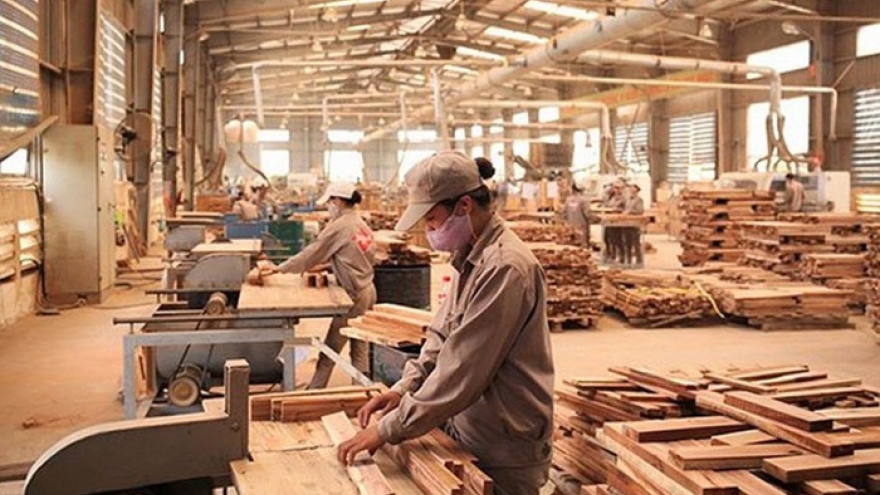New strategies required to set deeper roots for wood industry
To expand Vietnam’s wood industry sustainably, its development strategy must not only focus on the policies of importing countries but also domestic priorities.

Senior policy analyst Dr. To Xuan Phuc from non-profit organisation Forest Trends talked with the Vietnam Investment Review about his ideas for long-lasting and successful development in this field.
As the pandemic has disrupted Vietnam’s timber and furniture exports, what are the prospects for the industry to restructure itself?
Up until now, Vietnam’s wood industry has been strongly focusing on exports, but the ongoing pandemic disrupts both the input and output of domestic enterprises. However, the crisis can also be an opportunity to build new development strategies and select key products. Vietnam will only be able to find the best position on the global processing, trade, and consumption map if these strategies are developed thoroughly.
Moreover, if the country wants to further favour the export market, the development’s parameters should aim for the importing countries’ demands and export forecasts.
Policy changes such as the one from China three years ago can have a devastating impact on Vietnam’s woodchip industry. So, if the country blindly focuses on expanding the woodchip industry, without knowing which partners could buy or import these products, the plan will fail.
The same is true for other wood products. If Vietnam wants to export these, it must at least know where and how to do so. Furthermore, there should be policies to regulate local consumption, and domestic producers should be competitive within their respective product lines. However, up until now, Vietnam has not carried out any research on this.
Currently, planted forests are mainly concentrated in the central and north-eastern regions, but there is no developed system of processing facilities, especially in the central region. Although the Ministry of Agriculture and Rural Development (MARD) introduced some policies to support growers, there is a lack of output for post-harvest products.
Ultimately, Vietnam’s wood industry needs a clear vision and development policy for the next 20 years that also takes care of enriching all stakeholders involved in the industry. To achieve this, Vietnam must focus more on processing facilities and growers, as well as on developing the domestic market.
You have said that Vietnam’s policy focus lies on expanding exports. What are the criteria for the sector’s upcoming development strategy?
Exports are important and directly related to employment. However, if responsible state agencies give more attention to other industry-related groups, such as the 1.4 million afforestation households, the social and economic benefits are significant.
However, so far, their policies look at 5,300 businesses in the industry, especially at the over 2,000 exporters among them. While the export turnover of wood and products thereof has gradually increased year by year, from $6.9 billion in 2015 to $11.2 billion in 2019, Vietnamese businesses spend about $0.8-1.2 billion importing roughly two million cubic metres of sawn timber.
Nevertheless, it is a bit too early to state specific criteria for Vietnam’s wood industry as there is still no development strategy. It is, of course, very important to have a set of criteria for strategic products.
However, such criteria cannot be given by a few state management agencies but must be based on findings of group discussions with those who understand the industry the most. In that way, establishing a guiding strategy is a bit like how the United Nations Development Programme assesses poverty criteria.
More and more markets that import Vietnamese wood mention the risk of wood sourcing from China. Should Vietnam include measures against this risk in the contents of a new development strategy?
This risk has indeed become a concern of several countries that import our wood products as the US-China trade tensions intensified. Temporarily, such illegal imports could lead to a short-term decline in Vietnam’s timber exports. However, I think that the country should not wait until a new development plan is designed but rather take immediate action in order to prevent any damage to the industry.
Currently, domestic wood production is dominated by Chinese-invested enterprises, which are enjoying benefits that should belong to Vietnamese ones – especially, since export figures for timber and wood products remain strong, despite pandemic impacts.
If not in the development plan, how would you suggest reducing the risk of Chinese wood sources?
Vietnam’s state management agencies and business associations should work on detecting every single enterprise that partakes in the import of wood products from China.
To do so, they should closely monitor import and export of timber to and from Vietnam, thereby trying to detect any fluctuations in product quantity and other suspicious factors right away. However, this is a huge workload due to the large volume of product lines. For instance, just the wares exported to the European Union include over 250 different products. Therefore, the main issue is to find measures to ensure that related agencies have enough capacity and resources to do this work.
Nonetheless, Vietnam can successfully minimise the risk from Chinese imports if there are a clear focus and mutual mechanisms for information sharing among state agencies and associations, and businesses as well.
While Vietnamese customs acts as a guardian at the border, there is one hole to plug in this system, which is the current lack of similar agencies in localities that can inspect factories and detect any frauds.
It also would be better if Vietnam had an independent watchdog. For example, amid working on regulations needed to implement the Vietnam-EU Voluntary Partnership Agreement, which came into force in June 2019, Vietnam could inquire the EU to monitor illegal timber sourcing into the country, which could be a good solution to minimise such risks.



